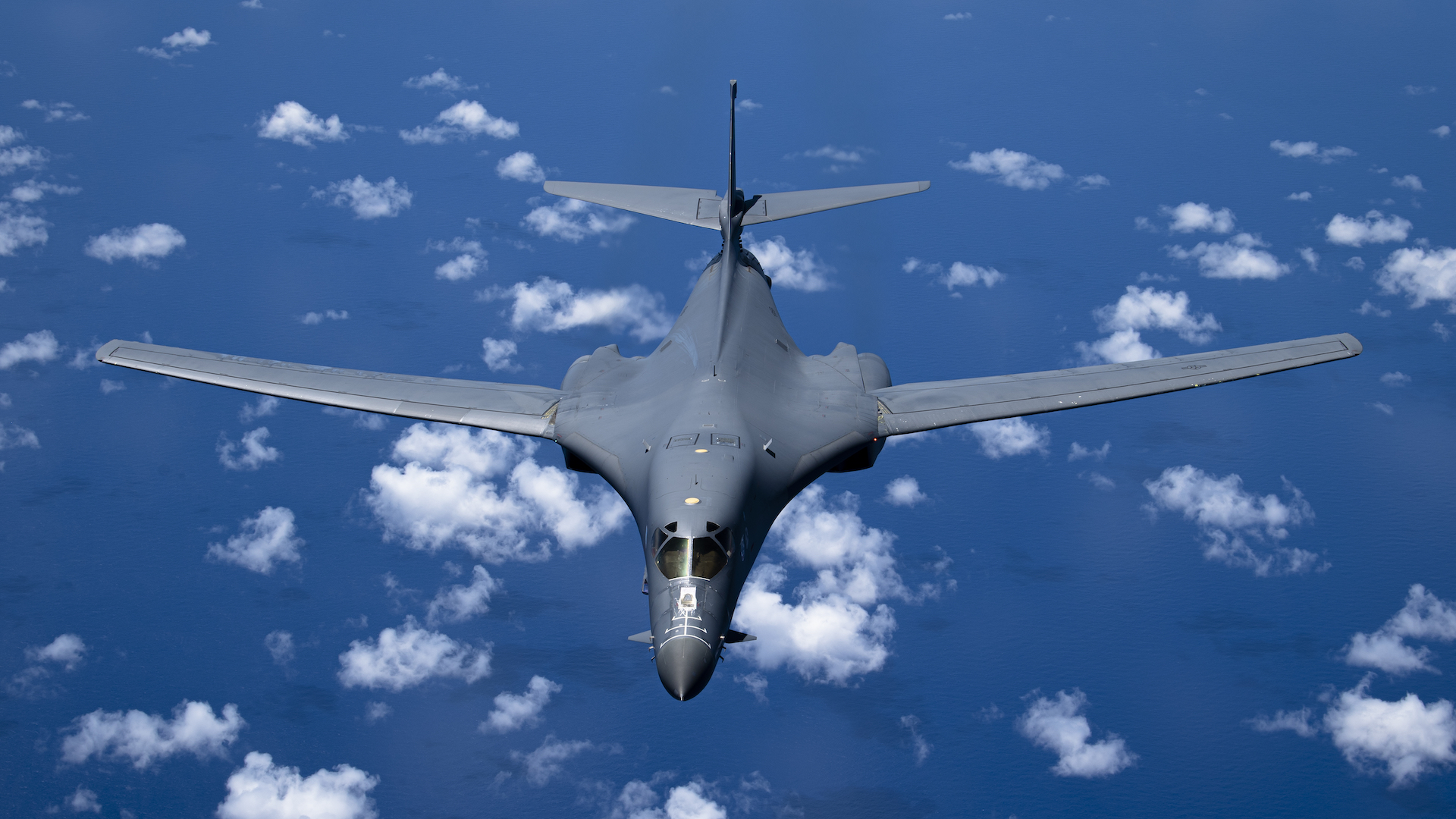

American forces launched airstrikes at 85 targets at seven sites in Iraq and Syria Friday, the first part of what the U.S. says will be a multi-part response. The operation, launched in response to the death of three American soldiers in Jordan, aimed at locations used by militias linked to Iran’s Islamic Revolutionary Guard Corps.
The airstrikes were a large undertaking, using aircraft based in the Middle East as well as B-1 bombers launched from the United States. They fired more than 125 precision munitions, hitting four locations in Syria and three in Iraq. The goal, according to Lt. Gen. Douglas Sims, director of the Joint Staff, was to degrade the ability of IRGC-linked groups to carry out further attacks on American forces.
Subscribe to Task & Purpose Today. Get the latest military news and culture in your inbox daily.
Sims said on Friday that the bombed areas were “targets that are holding locations for munitions that have been used against our men and women located in the region, as well as locations that have been providing command and control and intelligence collection in those strikes against Americans.”
John Kirby, the White House National Security Council spokesman, said repeatedly that the message from the United States is that the attacks on American forces have to stop.
The strikes were in response to the drone attack on Tower 22, a remote military base in northeastern Jordan, only a few miles from the border with Iraq and Syria. Sunday’s attack killed three soldiers with the U.S. Army Reserve and wounded 41 others. The Islamic Resistance in Iraq — an Iranian-backed network of Iraqi militias — claimed credit for the action.
Officials said that Friday’s operation is the first of a longer response. In a statement, President Joe Biden said that response “will continue at times and places of our choosing.” Defense Secretary Lloyd Austin echoed that.
“We do not seek conflict in the Middle East or anywhere else, but the president and I will not tolerate attacks on American forces,” Austin said in his statement.
The U.S. has not said how many people it believes were killed or wounded in the airstrikes, but
a spokesman for Iraq’s government said that 16 people were killed in the strikes inside Iraq, with 25 others wounded, according to al Jazeera. The same spokesman said the dead included civilians and denied the U.S. claim that Iraq coordinated with the Pentagon on the strikes. Iraq’s Popular Mobilization Forces, a collection of militias brought into Iraq’s security apparatus during its fight against ISIS and which include groups linked to the Islamic Resistance in Iraq, said that 16 members were killed in the airstrikes. The Syrian Observatory for Human Rights, an independent monitoring group, reported that 23 people were killed in Syria.
Friday’s operation was the largest series of airstrikes in recent weeks conducted by the United States in retaliation for attacks on American troops. Previous strikes included attacks on militia leaders as well as airstrikes in Baghdad. They have been in retaliation for more than 150 attacks on American forces in Syria and Iraq since October, when Israel’s war in Gaza began. Dozens of Americans have been injured in the drone, rocket and missile strikes. The fatal attack on Tower 22 was the first strike on Americans in Jordan and the first to result in direct deaths of troops (one civilian contractor died in Iraq from a “cardiac episode” while taking shelter during a drone strike in October).
The United States currently has approximately 2,500 troops in Iraq, as well as several hundred in Syria. Although the Iraqi government has brought up the idea of expelling American troops from the country, the Pentagon has denied it is in negotiations about a potential withdrawal from Iraq.
A spokesman for Iran, which supports the Islamic Resistance in Iraq as well as the Houthi movement in Yemen, called the airstrikes “another adventurous and strategic mistake by the United States that will result only in increased tension in instability in the region.” Iran denies being behind the attack in Jordan.
Although Sims and Kirby stressed repeatedly that Friday’s strikes were meant to disable the targeted groups’ ability to launch attacks, they declined to say whether or not they think this will be the end of attacks on Americans forces and bases in the region.
The latest on Task & Purpose
- The Army asked soldiers to turn in excess gear. It got back 37,000 items
- Medal of Honor recipient Clint Romesha unpacks life as a tanker
- Navy SEALs who disappeared during mission off Somalia identified
- Ukrainian Bradley only had a two-person crew when it wrecked a T-90
- China is expanding its marine corps, but how capable is it?